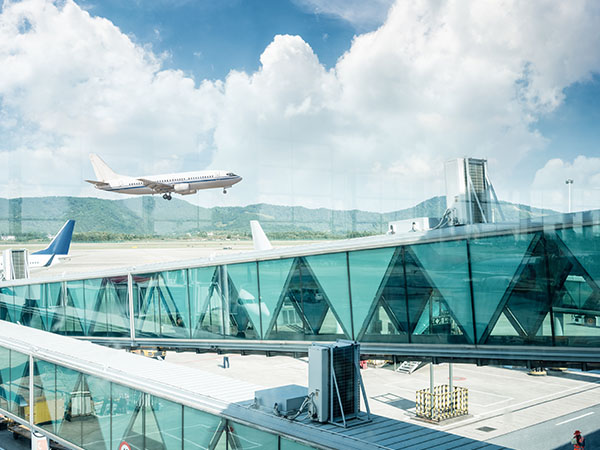At Just Aviation, we recognize the critical significance of streamlined flight operations, meticulously orchestrated to navigate the intricacies of global airspace with absolute precision and unwavering compliance. Our specialized expertise lies in the acquisition of overflight and landing permits, pivotal authorizations pivotal to enabling unhindered transits through sovereign skies and sanctioned landings at designated international airports.
What are Flight Permits?
Flight permits, authorized by Civil Aviation Authorities (CAAs), grant permission for aircraft operation in specific airspace or landing at designated airports. They are essential for safety, security, and commercial reasons. Varieties of flight permits cater to differing purposes, durations, and frequencies of flights. and there are a lot of Flight Permits Challanges .
Types of Flight Permits
Various types such as overflight, landing, ferry, scheduled/block, special, diplomatic, experimental, and amateur rocket permits exist, each with specific requirements, procedures, fees, and lead times.
Overflight Permits
Overflight permits enable entry, transit, and exit through a country’s sovereign airspace without landing. These permits confirm political, security, and financial clearance, ensuring no outstanding navigation fees to the Air Traffic Control (ATC) authority within the airspace boundary.
- Political Considerations: Apart from safety, political clearance is critical for overflight permits, ensuring no objections to the aircraft’s passage through sovereign airspace.
- ATC Authority Clearances: Verification of no outstanding navigation fees owed to the Air Traffic Control authority governing the airspace.
Landing Permits
Landing permits authorize aircraft to land at specific airports, confirming safety, noise compliance, and commercial viability if the flight is revenue-generating. They often include slot arrangements, parking permissions, and ground handling services.
- Safety and Noise Compliance: Detailed assessments are conducted to ensure the aircraft type adheres to safety and noise regulations specified by the country.
- Commercial Viability: Evaluation of the flight’s commercial nature, determining revenue generation aspects that might affect permissions.
Ferry Permits
Special flight permits for aircraft not meeting standard airworthiness requirements but capable of safe flight under specific conditions. Issued for relocation to a maintenance base, storage, delivery, or export, facilitating repairs, alterations, or maintenance.
- Airworthiness Evaluation: Specific conditions allowing safe flight are assessed and stipulated in ferry permits, enabling temporary flight of aircraft not meeting standard airworthiness requirements.
- Destination and Purpose: Clear indication of the base for maintenance, repairs, or export of the aircraft.
Scheduled / Block Permits
Block Permits Issued for regular or frequent flights (e.g., scheduled or series charter services) covering specific routes and services within a defined period. Aimed at simplifying the permit process for both operators and CAAs, reducing administrative burdens.
- Defined Routes and Services: Specific routes, frequency, and timeframes are outlined, streamlining administrative processes for regular operations.
- Operational Streamlining: Designed to minimize the administrative burden on both the aviation operator and the Civil Aviation Authority.

Special Flight Permits
Issued for unique purposes not falling under standard categories, covering research, compliance, crew training, market research, exhibitions, air shows, racing, or operating an aircraft above its maximum certificated takeoff weight.
- Unique Requirements: Tailored permits for distinct purposes necessitating deviations from standard flight categories, requiring specialized documentation and justifications.
- Diverse Purposes: Covering a spectrum of activities from crew training to exhibitions, each with its specific operational and safety considerations.
Overflight Permits vs Landing Permits
Overflight permits facilitate passage through airspace, while landing permits allow actual landings at airports. Overflight permits are typically easier and quicker to obtain due to lesser coordination and documentation requirements. Landing permits may necessitate additional permissions like slots, parking, and handling.
- Complexity and Documentation: Landing permits involve more detailed evaluations due to direct interaction with the country’s airports, requiring additional arrangements like slots and parking.
- Processing Time: Overflight permits are generally quicker to obtain due to fewer coordination needs compared to landing permits.
Flight permits are essential legal documents required for aircraft operators to conduct flights in different regions worldwide. An important point is that specific requirements may differ and vary in each region. Operators should always contact the relevant aviation authorities or specialist service providers and obtain the most up-to-date information.
Americas: Flight permits in Americas are regulated by various regulations, including:
- Federal Aviation Administration (FAA) regulations in the United States
- National Civil Aviation Agency (ANAC) regulations in Brazil
- Dirección General de Aeronáutica Civil (DGAC) regulations in Mexico
- National Administration of Aeronautics and Space (ANAE) regulations in Bolivia
Europe: Flight permits in Europe are issued by organizations such as the European Aviation Safety Agency (EASA) and national aviation authorities:
- Civil Aviation Authority (CAA) in the United Kingdom
- Direction des Services de la Navigation Aérienne (DSNA) in France
- Luftfahrt-Bundesamt (LBA) in Germany
- Agenzia Nazionale per la Sicurezza del Volo (ANSV) in Italy
Asia-Pacific: Flight permits in the Asia-Pacific region are subject to regulations set by various national aviation authorities, including:
- Civil Aviation Administration of China (CAAC) in China
- Civil Aviation Authority of Singapore (CAAS) in Singapore
- Civil Aviation Authority of Thailand (CAAT) in Thailand
- Directorate General of Civil Aviation (DGCA) in Indonesia
Regulations for flight permits vary in different regions such as the Americas, Europe and Asia-Pacific. Operators should know the specific regulations and required documents for each region as these may differ. By understanding and adhering to these regulations, operators can navigate the permit acquisition process smoothly and ensure safe and efficient flight operations.

How To Obtaining Flight Permits?
The acquisition of flight permits encompasses a meticulous process governed by the intricate framework of regulatory protocols, varying significantly based on permit classification, geographic locale, and the distinct aviation statutes of individual nations. The comprehensive procedure entails the following technical intricacies:
Documentation Assessment and Verification
Scrutiny and discernment of essential documents, including but not limited to:
- Airworthiness Certificates: Ensuring compliance with designated airworthiness standards (FAA Form 8100-2, EASA Form 25).
- Insurance Certificates: Verification of comprehensive insurance coverage in alignment with stipulated requirements (Certificate of Insurance – COI).
- Aircraft Registration Documents: Valid registration credentials in consonance with international norms (Aircraft Registration Application, Certificate of Registration).
Application Form Completion and Precision
Fastidious completion of meticulously structured application forms, encompassing:
- Flight Details: Including proposed routes, schedules, and aircraft specifics.
- Purpose of Flight: Clear articulation of the mission or intent of the operation.
- Operational Specifications: Details regarding crew, passengers, and cargo.
Regulatory Engagement and Interagency Collaboration
Prudent interfacing with Civil Aviation Authorities (CAAs) and ancillary regulatory entities, involving:
- Interagency Coordination: Facilitating seamless communication among relevant agencies.
- Negotiations for Special Permissions: If necessitated by non-standard flight operations (Special Operations Manual).
Compliance Management and Permit Conditions
Stringent adherence to prescribed conditions encompassing a breadth of regulatory specifications, such as:
- Slot Arrangements: Securing specific time slots at congested airports.
- Ground Handling Services: Arrangements for aircraft services upon arrival.
- Parking Permissions: Designated space for aircraft storage.
Document Retention and Compliance Verification
Diligent safeguarding and retention of critical documents including:
- Permit Authorization: The granted flight permit in original or certified form.
- Communication Records: Logs detailing interactions with regulatory bodies.
- Compliance Records: Detailed records ensuring fulfillment of stipulated conditions (Operational Compliance Checklist).
The meticulous compilation, submission, and adherence to an array of technical documents, aligned with stringent regulatory paradigms, are foundational to the acquisition of flight permits. This process intricately interweaves legal, operational, and safety imperatives, ensuring the authorization of aviation operations in compliance with diverse and exacting global standards.

Overflight Permits: Regulations and Authorities
Besides flight permits, aircraft operators often need transit permits to cross the airspace of different regions. An important point is that specific requirements may differ and vary in each region.
Americas
In the Americas, the regulations and authorities overseeing overflight permits include:
- Federal Aviation Administration (FAA): The FAA issues permits for United States airspace. Operators must comply with FAA regulations such as 14 CFR (Section 14 of the Code of Federal Regulations), especially for the General Business Rules.
- International Civil Aviation Organization (ICAO): ICAO provides global standards and recommended practices for permits. Its regulations are followed by many countries in the Americas, ensuring harmonized aviation practices and safety.
- National Civil Aviation Agencies: Every country in the Americas has its own civil aviation agency responsible for overseeing permits. For example, Transport Canada issues permits in Canada, while Brazil’s National Civil Aviation Authority (ANAC) issues permits in Brazil.
Europe
Overflight permits in Europe are governed by various regulations and authorities, including:
- European Aviation Safety Agency (EASA): EASA sets regulations for permits in European Union (EU) member countries. Operators must comply with EASA regulations such as Commission Regulation (EU) No 965/2012, which contains rules for air operations.
- Eurocontrol: Eurocontrol, the European organization for air navigational safety, plays an important role in the management and coordination of permits in European airspace.
- National Aviation Authorities: Each European country has its own national aviation authority responsible for overseeing permits. For example, the Civil Aviation Authority (CAA) in the UK and the Direction des Services de la Navigation Aérienne (DSNA) in France issue and issue permits in their jurisdictions.
Asia-Pacific
The regulations and authorities overseeing overflight permits in the Asia-Pacific region include:
- Civil Aviation Administration of China (CAAC): CAAC regulates overflight permits for China’s airspace. Operators must comply with CAAC regulations. For example, they must comply with the Regulation on the Management of Flight Permits and the Regulations on the Management of Air Traffic Flow.
- International Air Transport Association (IATA): IATA provides guidelines and best practices for obtaining transit clearances in the Asia-Pacific region, ensuring compliance with international aviation standards.
- National Aviation Authorities: Each country in the Asia-Pacific region has its own national aviation authority responsible for overseeing transit permits. For example, in Singapore, the Civil Aviation Authority (CAAS) issues permits, while in Thailand, the Civil Aviation Authority (CAAT) oversees permits.
Required Documents for Overflight Permits
When applying for overflight permits, operators mostly need to submit the following documents:
- Aircraft Registration Certificate
- Airworthiness Certificate
- Insurance Certificate
- Noise Certificate
- Flight Plan
- Operational Specifications
- Security Documentation
Documents may vary, and more documents can be required depending on the airport and country.
Landing Permits and Regulations in Different Regions
In addition to permits, aircraft operators often require landing permits to land at airports in various regions. An important point is that specific requirements may differ and vary in each region.
Americas
In the Americas, the regulations and authorities overseeing landing permits include:
- Federal Aviation Administration (FAA): The FAA regulates landing permits for the United States. Operators must comply with FAA regulations, such as Title 14 of the Code of Federal Regulations (14 CFR), particularly Part 91 for general operating rules. Specific FAA regulations related to landing permits include those concerning airport operations and landing rights.
- National Civil Aviation Agencies: Each country in the Americas has its own civil aviation agency responsible for overseeing landing permits. For example, in Canada, Transport Canada regulates landing permits through the Canadian Aviation Regulations (CARs). In Brazil, the National Civil Aviation Agency (ANAC) governs landing permits under Brazilian civil aviation regulations.
Europe
Landing permits in Europe are regulated by various regulations and authorities:
- European Aviation Safety Agency (EASA): EASA sets regulations for landing permits in European Union (EU) member states. Operators must comply with EASA regulations such as Commission Regulation (EU) No 965/2012, which contains rules for air operations. EASA’s regulations cover various aspects related to landing permits, including operating procedures, safety standards, and landing rights.
- National Aviation Authorities: Each European country has its own national aviation authority responsible for overseeing landing permits. For example, in the UK, the Civil Aviation Authority (CAA) enforces regulations and issues landing clearances through the Air Navigation Order (ANO).
Asia-Pacific
The regulations and authorities overseeing landing permits in the Asia-Pacific region include
- Civil Aviation Administration of China (CAAC): CAAC regulates landing permits for China’s airports. Operators must comply with CAAC regulations, such as the Regulations on Administration of Landing Permits and the Measures for the Administration of Airport Slot Allocation. These regulations outline the requirements and procedures for obtaining landing permits in China.
- National Aviation Authorities: Each country in the Asia-Pacific region has its own national aviation authority responsible for overseeing landing permits. For example, in Singapore, the Civil Aviation Authority (CAAS) enforces regulations and issues landing clearances through the Air Navigation Order (ANO). In Thailand, the Civil Aviation Authority (CAAT) oversees landing clearances under Thai aviation regulations.
Required Documents for Landing Permits
When applying for landing permits, operators typically need to submit the following documents:
- Aircraft Operator Certificate (AOC)
- Aircraft Registration Certificate
- Airworthiness Certificate
- Insurance Certificate
- Noise Certificate
- Flight Plan
- Operational Specifications
- Passenger and Crew Manifest
- Customs and Immigration Documents
- Pilot License
- Medical Certificates
Operators should be aware of the regulations set by organizations such as the FAA in the USA, EASA in Europe, CAAC in China and the relevant national aviation authorities in each country. These regulations specify the documents and procedures required for obtaining permits.
At Just Aviation, we offer a wide range of services to suit your specific needs. When you need help with flight clearances, transit clearances or landing clearances, our expert team is here to guide you through the process so you have a smooth and efficient experience. We understand the importance of timely and accurate documentation and work diligently to ensure that all necessary permits and approvals are obtained quickly so you can focus on your core operations.
